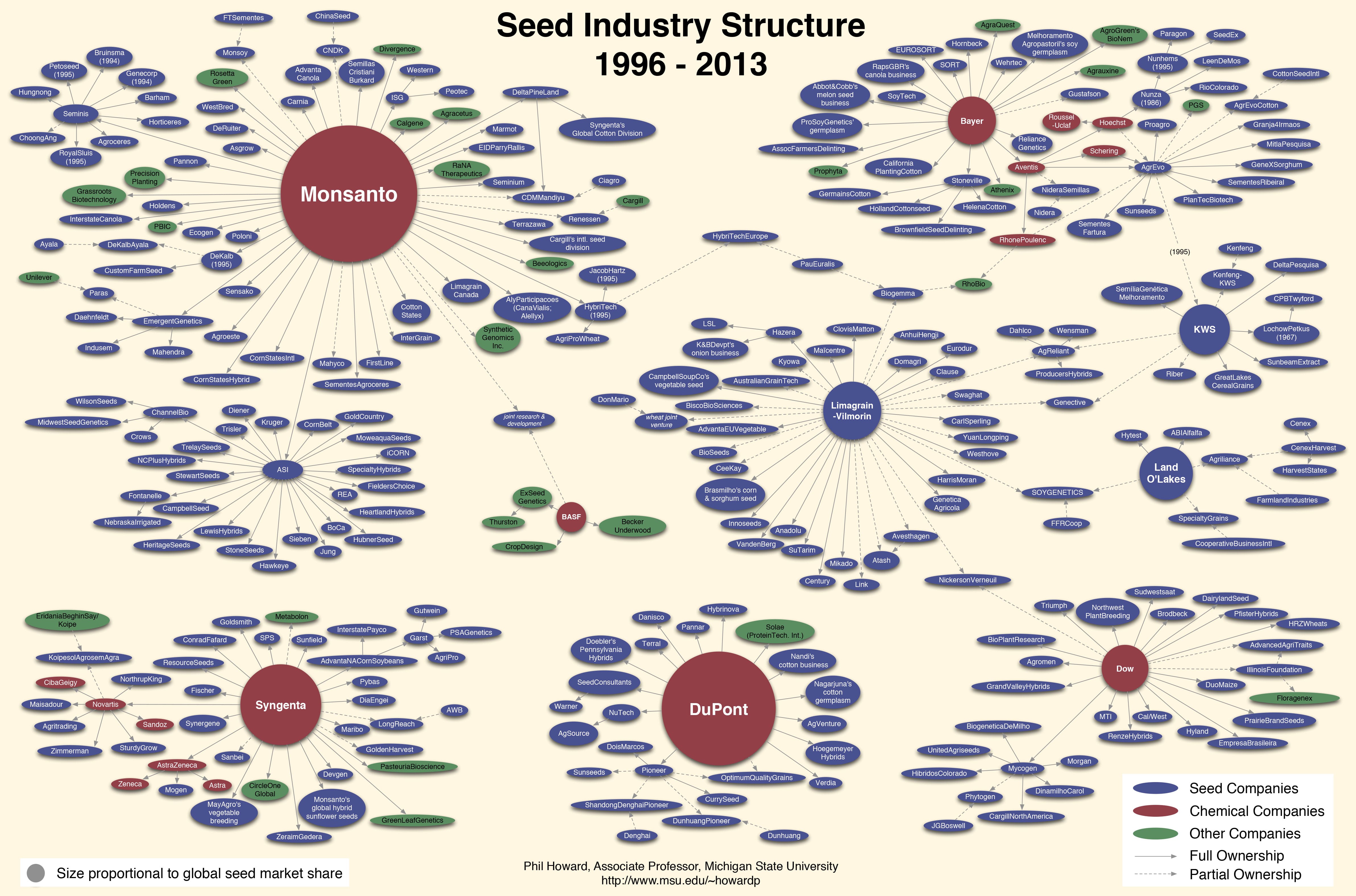I don't recognize most of the seed company names, maybe because a lot of them look like they sell grain seed for animal feed (and probably GMOs) and maybe because we buy from companies that are independent of big corporations.
Vandana Shiva, the Indian food activist, often stresses the importance of saving seed and having the seed supply in the hands of people, not corporations. I've been slowly learning to save seed over the last few years. It started with sunflowers. This year the purple hull peas (similar to black eyed peas) that we planted from purchased seed didn't come up. Fortunately, we had saved some from last year and that's what came in and produced for us. For some plants, we're not in a position to save seed as the different varieties will cross pollinate and you don't know what you'll end up with. One year we had a yellow-fleshed moon and stars watermelon show up as a volunteer. We were excited about the prospect of saving the seed until we cut into it and discovered it was red inside. Next year we'll probably only grow one variety of watermelon so we'll be able to save the seed.
I'm working on saving more herb and flower seeds, as well. Not only does saving seed put the food supply in your hands, the seeds from your garden are from plants that thrived there. Meaning they're more likely to thrive than purchased seed. Of course, this isn't something you start doing from the very beginning as a gardener or farmer. You need to build on baby steps, learning one skill at a time and we're now at the seed saving level.




No comments:
Post a Comment